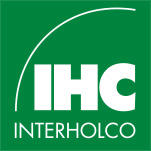Interholco: The case for Sustainable Forest Management in the Congo Basin compared to other land use

Interholco (IHC) is one of the largest producing companies of African tropical hardwood, specialized in forest management and wood production. Its subsidiary company IFO manages a 1.16 million ha natural forest area in the Republic of Congo: the largest FSC®-certified tropical timber concession. In the IHC concession, 69% of the area is utilized for production, 27% for conservation/protection and 4% for rural development.
Interholco has extensive experience with natural and social capital assessments. Numerous environmental and socio-economic impact assessments have been carried out in preparation of the forest management plan and certification, combined with over 10 years of ongoing detailed monitoring of impacts and dependencies from business activities on natural capital (e.g. on vegetation, water, soil and wildlife).
Why a natural capital assessment?
Sustainable tropical forest management is competing with other land-uses such as mining, agriculture (palm oil, cocoa…), conventional logging and conservation areas. Although financial return from agriculture tends to be higher than from sustainable forest management, agriculture leads to loss of the forest ecosystem, its functions and services. Conservation areas are often proposed to keep the forest ‘pristine’, without harvest.
This assessment evaluates in detail the impacts of Sustainable Forest Management (SFM) in the Congo Basin, and in particular in the IHC forest concession, compared to a pristine situation and other land-use options, taking into account economic, social and ecological values.
What was the Protocol or the Sector Guide used for?
The forest products sector guide was used to support the full assessment aimed at estimating the value and opportunity cost or benefit of SFM compared to other land-uses.
The objective was not to question the benefits of conservation areas, neither to exclude opportunities of palm oil production outside current forest management areas, but to evaluate the cost and benefits of different land-use types, supporting optimal decision-making in terms of economic and social development, while considering impacts to the forest ecosystem.
How did you conduct your assessment?
The case study compared the value of SFM in the Congo Basin, in particular the IHC forest concession of 1.16 million ha, with conservation and palm-oil on a similar hypothetical area.
The baseline was set as the ‘pristine state’, meaning that the forest has not been harvested. This does not imply that the forest is ‘virgin’ or ‘intact’ or that no natural or human induced disturbances have taken place that shaped the forest ecosystem.
The focus was on the impacts on vegetation, biomass and carbon. The materiality assessment was based on past environmental impact assessments, and the guide was used to assess the probability of occurrence and potential magnitude of the impacts.
Data from long-term monitoring were used to measure the impact on vegetation. The Emission Reduction Program Document developed by the World Bank for the Republic of Congo was used as a reference for CO2 emissions, alongside internal calculation based on long term monitoring.
What were the outcomes of the assessment?
The assessment concludes that SFM, as practiced in the IHC forest concession, and in the Congo Basin in general, allows to maintain the integrity of the forest and its associated values, while providing an important economic and social incentive to preserve the forest.
The assessment revealed that SFM in the IHC concession has a minimum impact on the forest ecosystem, thanks to very low intensity of harvest (about 0.5 trees per ha), which affects as little as 6.7% of the harvest area and 5% of carbon stock, only once every 30 years. Forest reconstitution and tree regrowth is according to scientific studies fast, with low harvest intensity.
Regarding the economic value, the assessment revealed that SFM at 43 Euro per ha per year, provides 17 times more economic value than strict conservation. SFM’s economic value enables the creation of social value, driving employment and local development. If Payment for Environmental Services (PES), in particular CO2 emission reduction, were included, a break-even point with conservation would be reached at a CO2 price of 33 USD/tCO2 eq. (according to the World Bank ERPD for the Republic of Congo). This means a potential opportunity cost of 60 million Euro per year, associated with social and local development catalysed by SFM.
Palm oil would theoretically provide about 700 times more economic value than conservation and about 40 times more than SFM. Nevertheless, this is outweighed by the significant CO2 emissions provoked by deforestation for palm oil, and the irreversible loss of forest ecosystem functions and services.
Next steps
The Natural Capital (NC) assessment provided more insight on the impacts and concept of dependencies, in the evaluation methods of Natural Capital, and will guide our future monitoring indicators which are integrated in business decision making. We will evaluate in the future if a specific NC assessment is needed for new business development scenarios.

